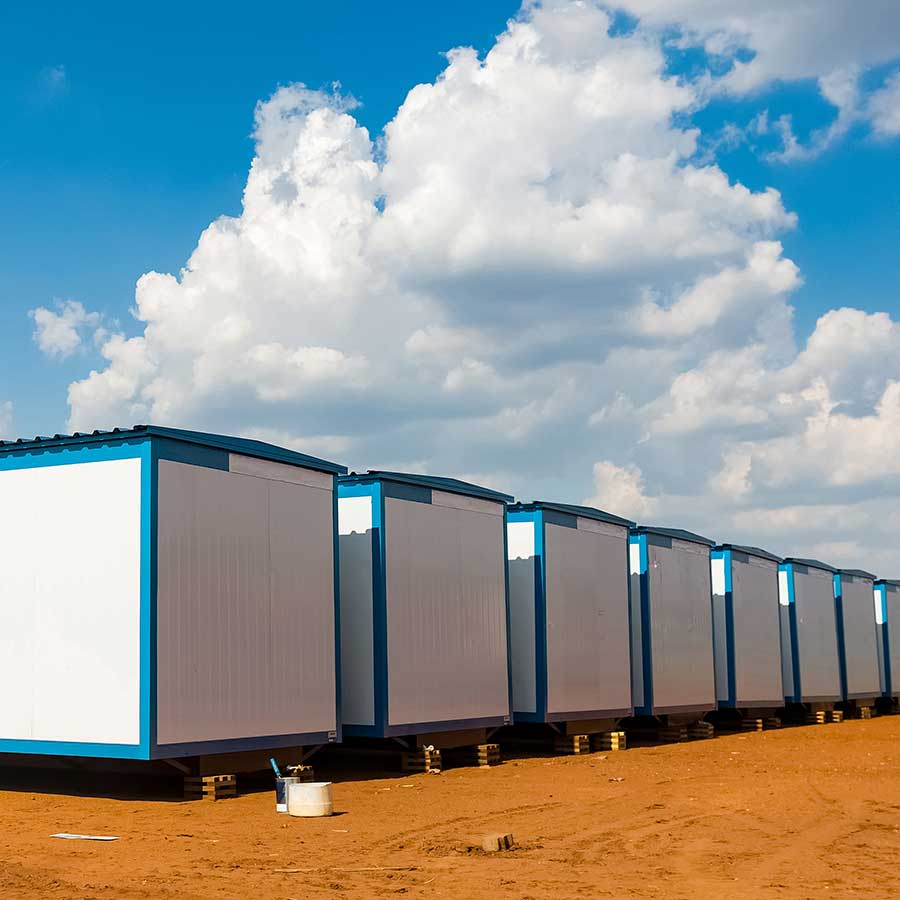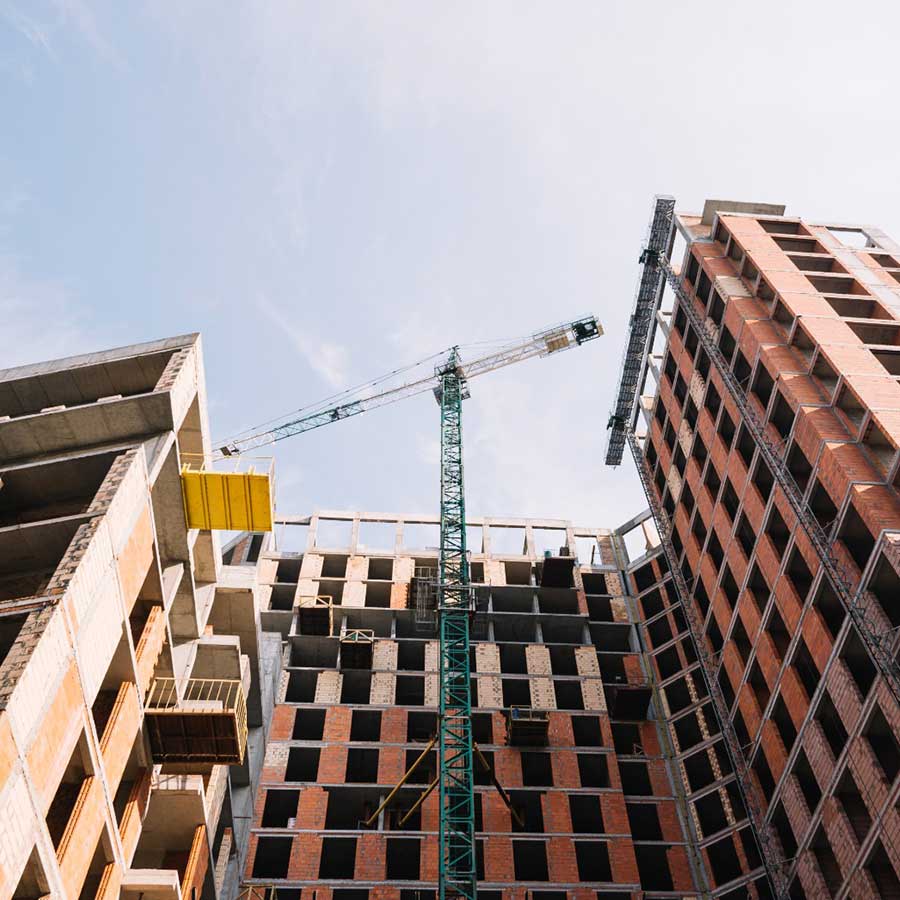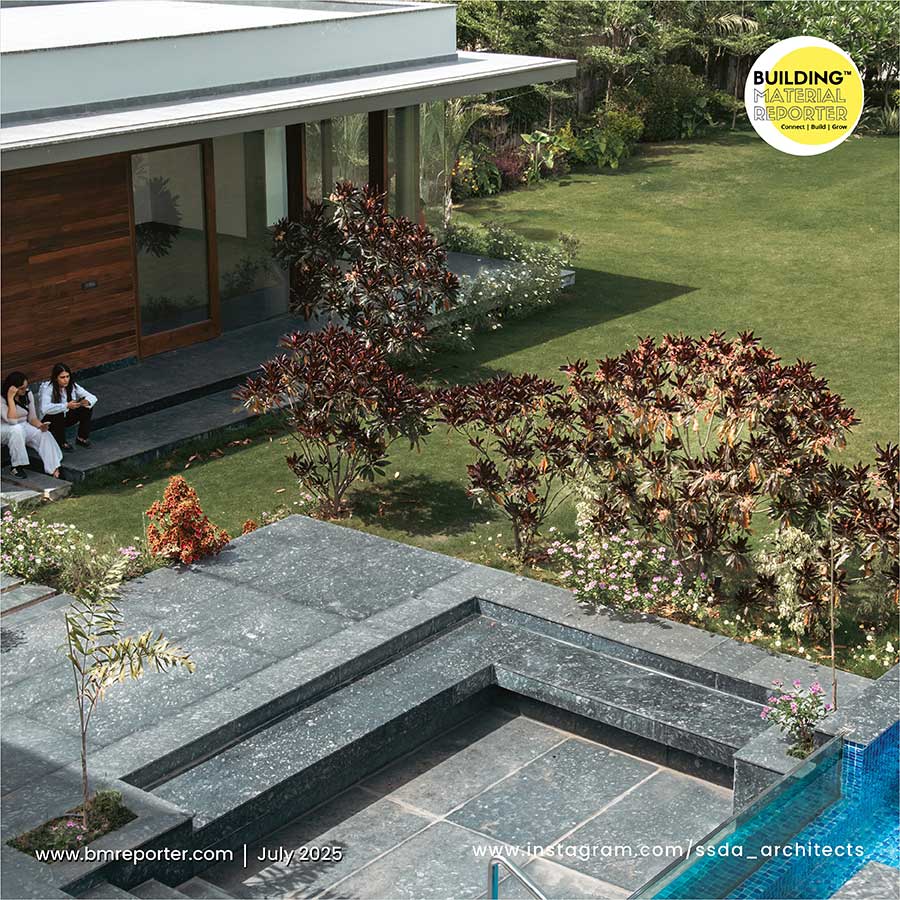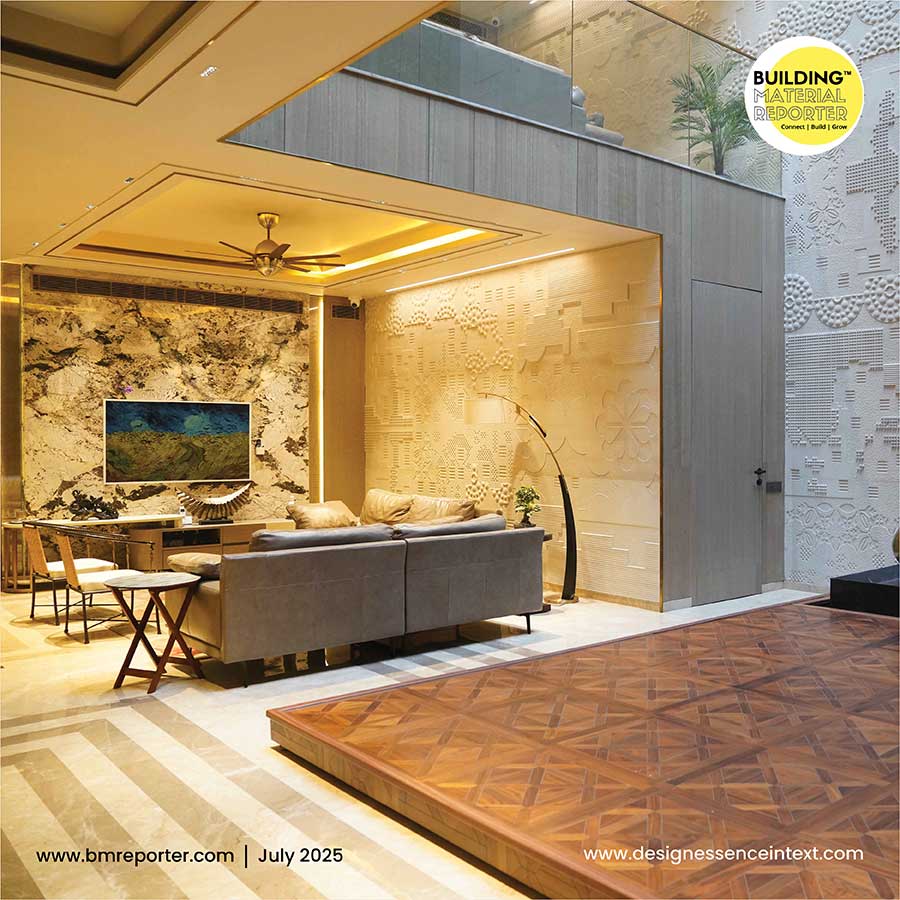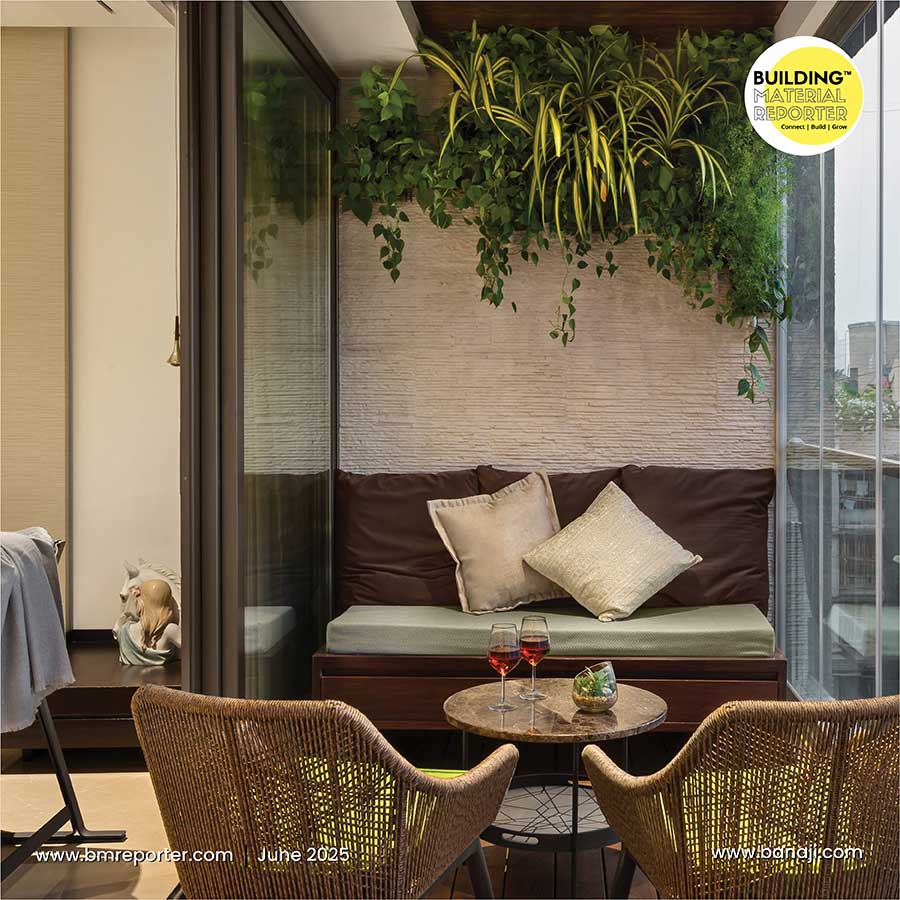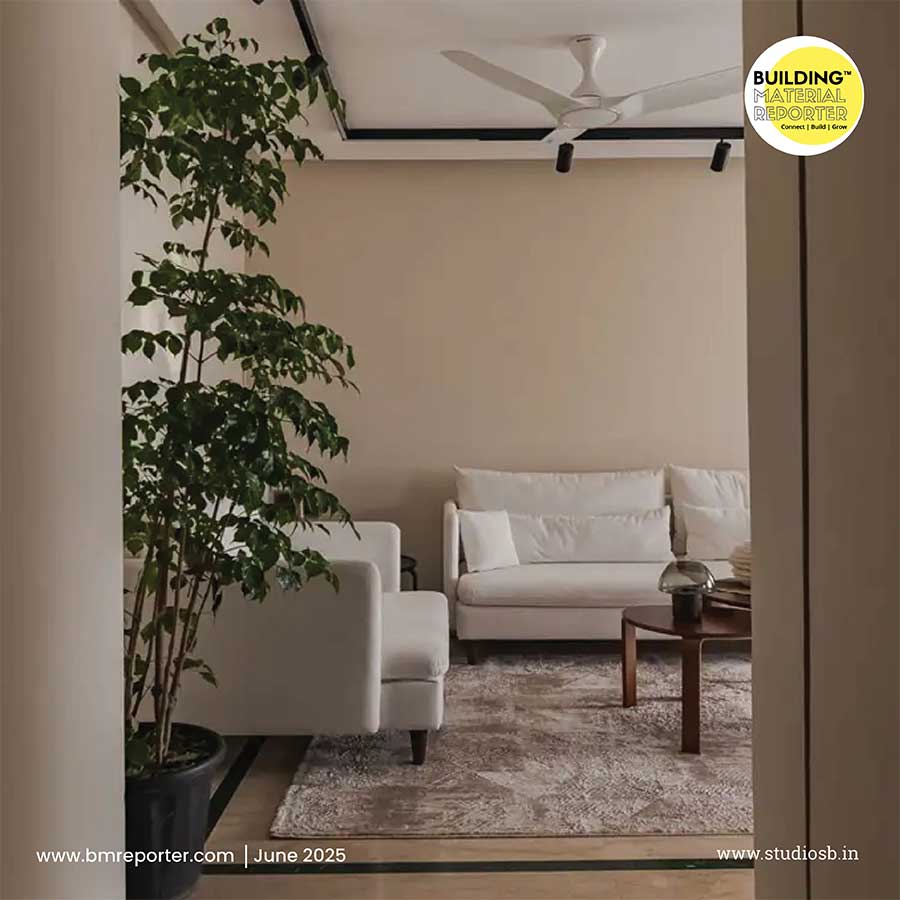Man Material Mother Nature And Market - A Design Philosophy
- January 11, 2025
- By: Ar. Priyanshi Shah
- INFLUENCERS
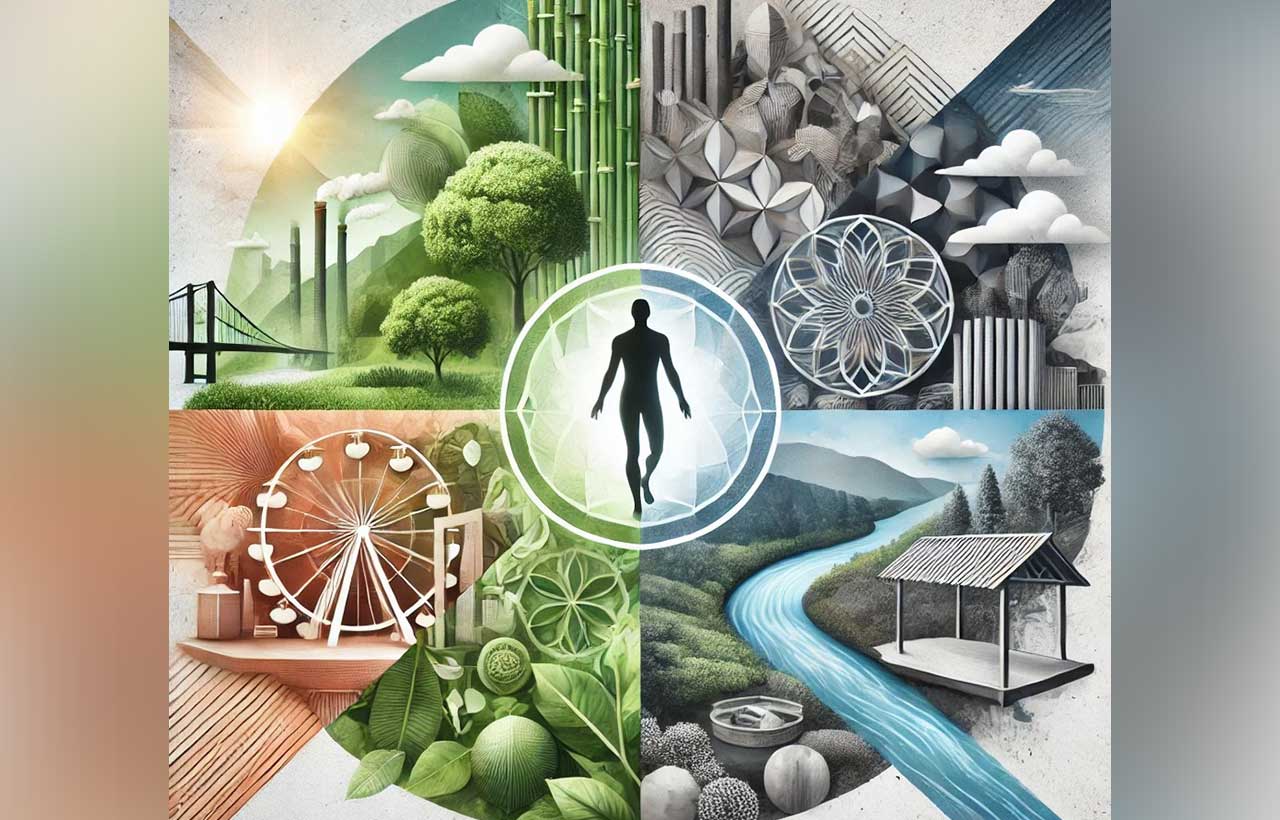 The poetics of space often reflected the interplay of building materials, techniques and human aspirations defining the architectural style. From the grand structures of ancient civilizations to the dynamic modern skylines, our cities are narrating the tales of how societies evolve by experimenting with resources and pushing the boundaries of innovation. In this article from Building Material Reporter Magazine, we delve deeper into the holistic approach of designing considering the four main factors - Man, Material, Mother Nature and Market.
The poetics of space often reflected the interplay of building materials, techniques and human aspirations defining the architectural style. From the grand structures of ancient civilizations to the dynamic modern skylines, our cities are narrating the tales of how societies evolve by experimenting with resources and pushing the boundaries of innovation. In this article from Building Material Reporter Magazine, we delve deeper into the holistic approach of designing considering the four main factors - Man, Material, Mother Nature and Market.
Holistic Approach
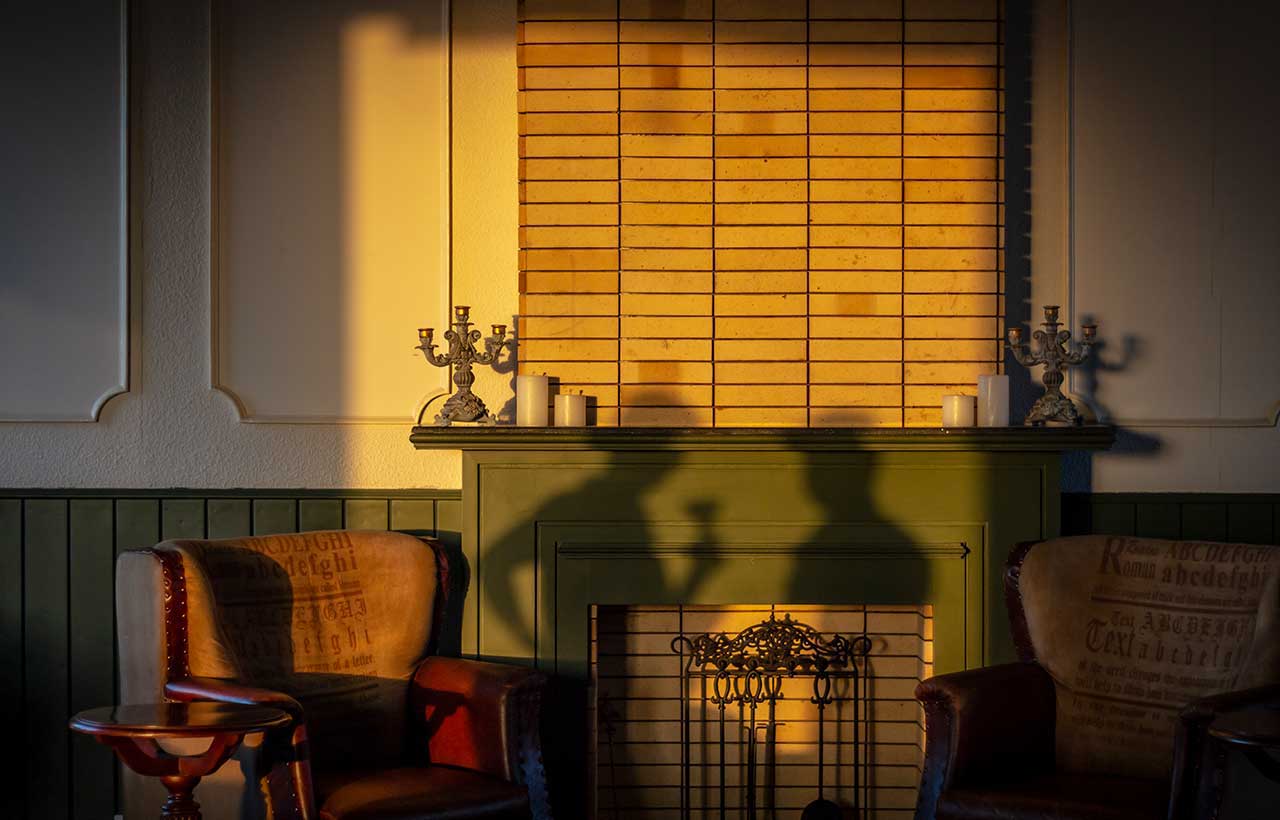 A profound narrative begins with the designer’s mind, from intangible dreams and visions transforming into tangible and concrete forms. It is a story about construction, material, and techniques that go beyond technical aspects to foster well- being of the users. The architectural language of the space, the sustainable interiors and the context shapes the outcome of the structure. With the humane process, materialistic expression, the beauty within nature and the challenges of the market, designers strive to enrich the human experience in a holistic creation. The past learnings help us to design the future in a conscious manner balancing harmony and functionality. The Romans redefined the monumentality while the gothic cathedrals of Europe showcased artistic elegance and spirituality. The modern industrial revolution introduced materials like steel and concrete emphasizing transparency, clear forms and functionality above aesthetics. Each era brought transformation reshaping the way humans inhabited and interacted with spaces.
A profound narrative begins with the designer’s mind, from intangible dreams and visions transforming into tangible and concrete forms. It is a story about construction, material, and techniques that go beyond technical aspects to foster well- being of the users. The architectural language of the space, the sustainable interiors and the context shapes the outcome of the structure. With the humane process, materialistic expression, the beauty within nature and the challenges of the market, designers strive to enrich the human experience in a holistic creation. The past learnings help us to design the future in a conscious manner balancing harmony and functionality. The Romans redefined the monumentality while the gothic cathedrals of Europe showcased artistic elegance and spirituality. The modern industrial revolution introduced materials like steel and concrete emphasizing transparency, clear forms and functionality above aesthetics. Each era brought transformation reshaping the way humans inhabited and interacted with spaces.
Understanding Material Expression
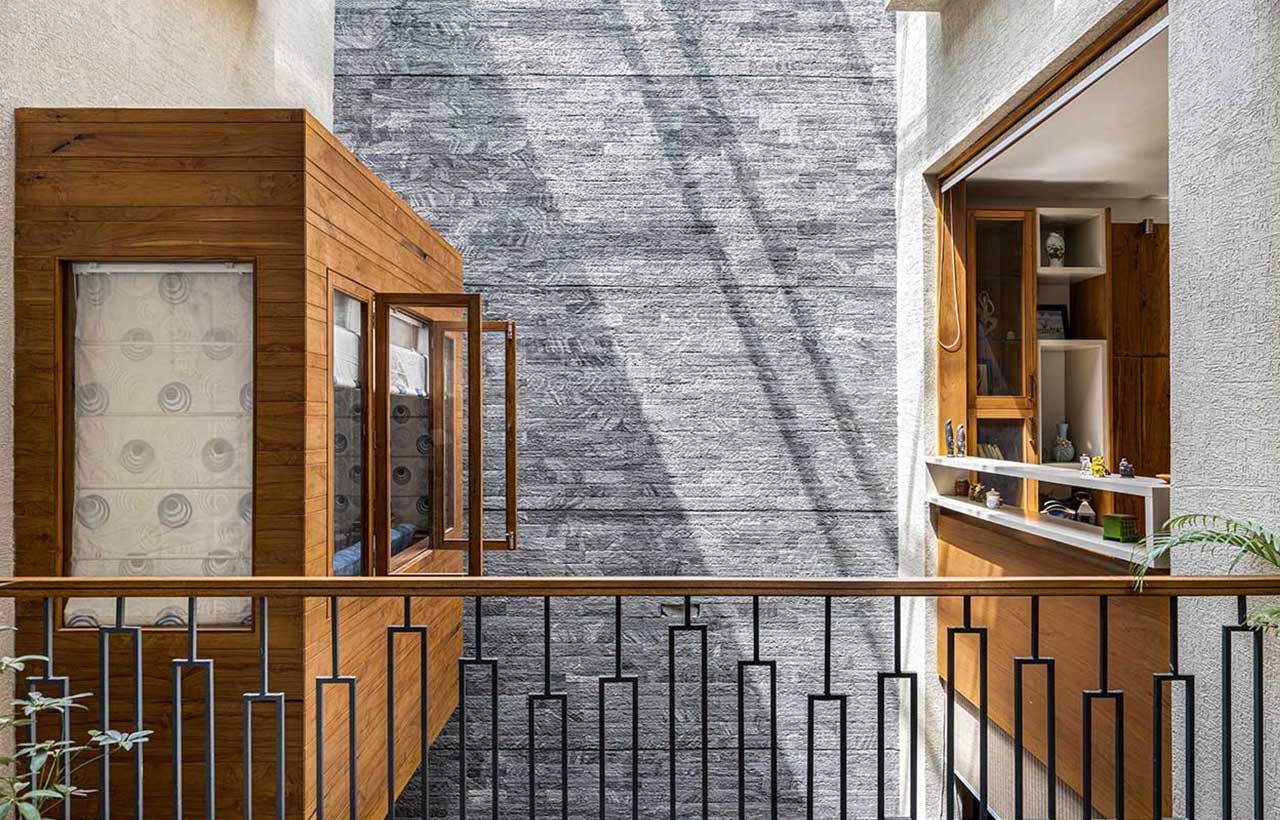 The structure is an amalgamation of spatial play of spaces, traditional materials, and modern techniques to fulfil the purpose of a harmonious design. The touch of the texture and the colour of the grains depict the craftsmanship connecting inhabitants with the world. Materials are timeless, holding past, present and future within their composition. They are not static objects but a living entity, which tell a tale of their own. The story of their origin, composition, interaction with the surroundings, and combination of various techniques reflect the transformation of traditional values to modernity. It's the future where materials, construction techniques, markets, nature, and innovation will create a new paradigm interacting with the environment. We should explore how material portrayals refine the design process, functionality and aesthetics. It is about story, the choice of material and innovation and carving out spaces that inspire, endure and connect.
The structure is an amalgamation of spatial play of spaces, traditional materials, and modern techniques to fulfil the purpose of a harmonious design. The touch of the texture and the colour of the grains depict the craftsmanship connecting inhabitants with the world. Materials are timeless, holding past, present and future within their composition. They are not static objects but a living entity, which tell a tale of their own. The story of their origin, composition, interaction with the surroundings, and combination of various techniques reflect the transformation of traditional values to modernity. It's the future where materials, construction techniques, markets, nature, and innovation will create a new paradigm interacting with the environment. We should explore how material portrayals refine the design process, functionality and aesthetics. It is about story, the choice of material and innovation and carving out spaces that inspire, endure and connect.
Natural Materials
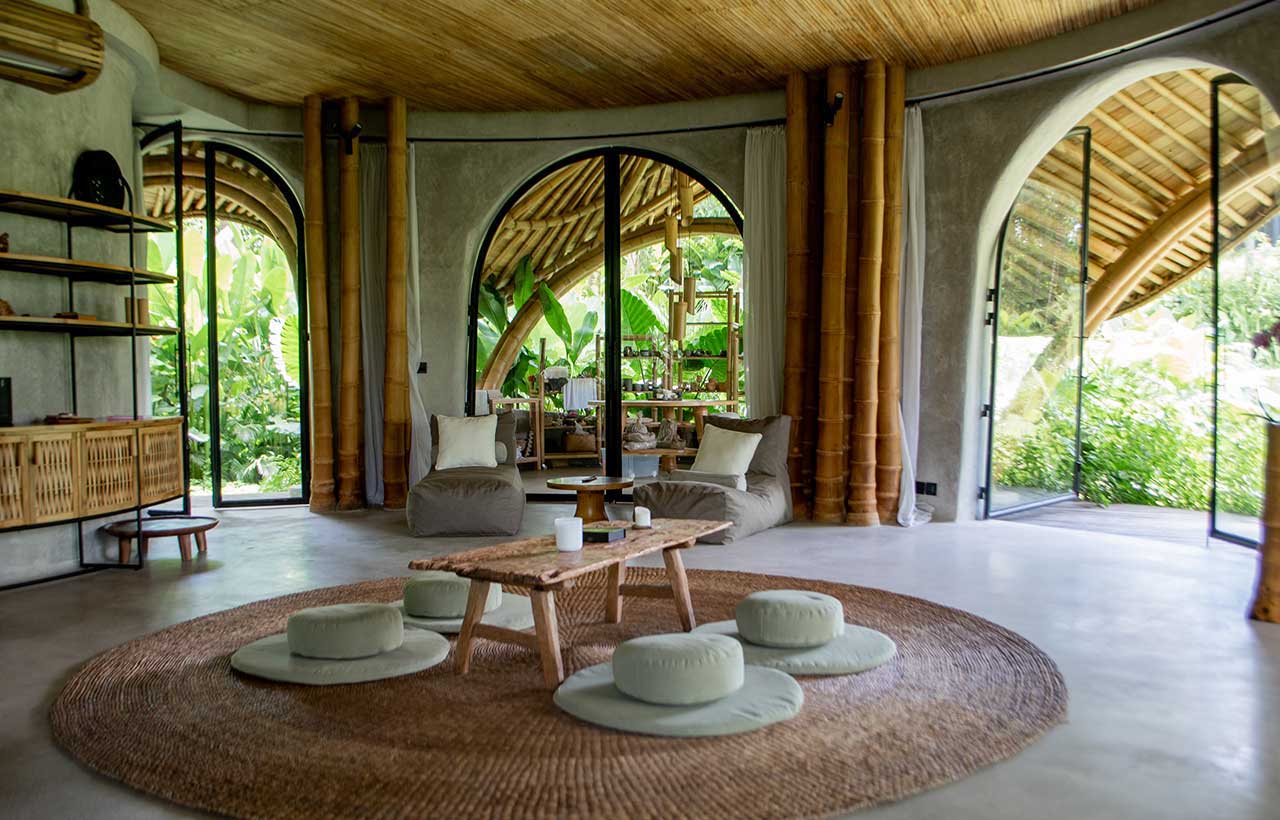 Designers are exclusively working with natural materials with innovative construction methods, experimenting with the organic flow of forms, uncovering traditional techniques with modern sustainability practices, and crafting profound user-centred spaces. Bamboo, light, flexible and breathes with nature creates a symbolic expression within nature while Stone, its textures are hard, and strong reminding one of timelessness. The surface of the wood tells the intricate details of craftsmanship and free-flowing clay mixed with various other materials can evolve and grow guiding our sensory experience.
Designers are exclusively working with natural materials with innovative construction methods, experimenting with the organic flow of forms, uncovering traditional techniques with modern sustainability practices, and crafting profound user-centred spaces. Bamboo, light, flexible and breathes with nature creates a symbolic expression within nature while Stone, its textures are hard, and strong reminding one of timelessness. The surface of the wood tells the intricate details of craftsmanship and free-flowing clay mixed with various other materials can evolve and grow guiding our sensory experience.
- Ecological Development: In this evolving world, there is a silent change taking place where materials, technology, nature and construction challenges converge to shape our future as a new chapter in human history. There is a call for an ecological practice, where every aspect from reducing carbon footprint to enhancing the lifetime of materials reflects the holistic and sustainable approach to development.
- Mother Nature:The days are gone when the market was driven by the cheapest materials and techniques, and now we are focused on ecological effective measures, consciously aware of environmental challenges, and demand for sustainable materials with innovative resolutions. It's not just innovation but responsibility to build with Mother Nature, not against it.
- MAN: Imagine walking in a space feeling your senses, touching the texture and listening to the silence. A feeling worth living in! With the rapid changes in the tools of design and advancement in materials and expressions, the spaces lack the connections, cultural values and contextual aspects of designing. Man, implies the human values, spirit and vision of beauty that unfolds into the interplay of harmonious and responsive buildings that enrich human experience. Materials and textures are the expressions in the built form that affect our mood and represent individuality. Our core challenge as designers lies in understanding the intersection of Man, Material, Mother Nature and Market resulting in a holistic design.
- Market - Collaborative Architecture: Connecting to nature, we create environments that foster human well-being evoking all the senses and appreciating the beauty around us – that we often refer to as our Mother Earth, on the other hand, the complex challenge lies in understanding the latest trends, encouraging association with various brands and building a character in the market. Designing a built form affects our emotional, psychological, and physical needs and surroundings. Considering factors such as ventilation, natural light, less carbon footprint, and sustainable materials creates an environment that fosters well-being, comfort, and harmony. The inviting and functional elements of design can enhance the depths of sensitive architecture. Such as considering intangible elements intertwined with the strategic planning to accommodate diverse needs.
Sustainable and Conscious Design
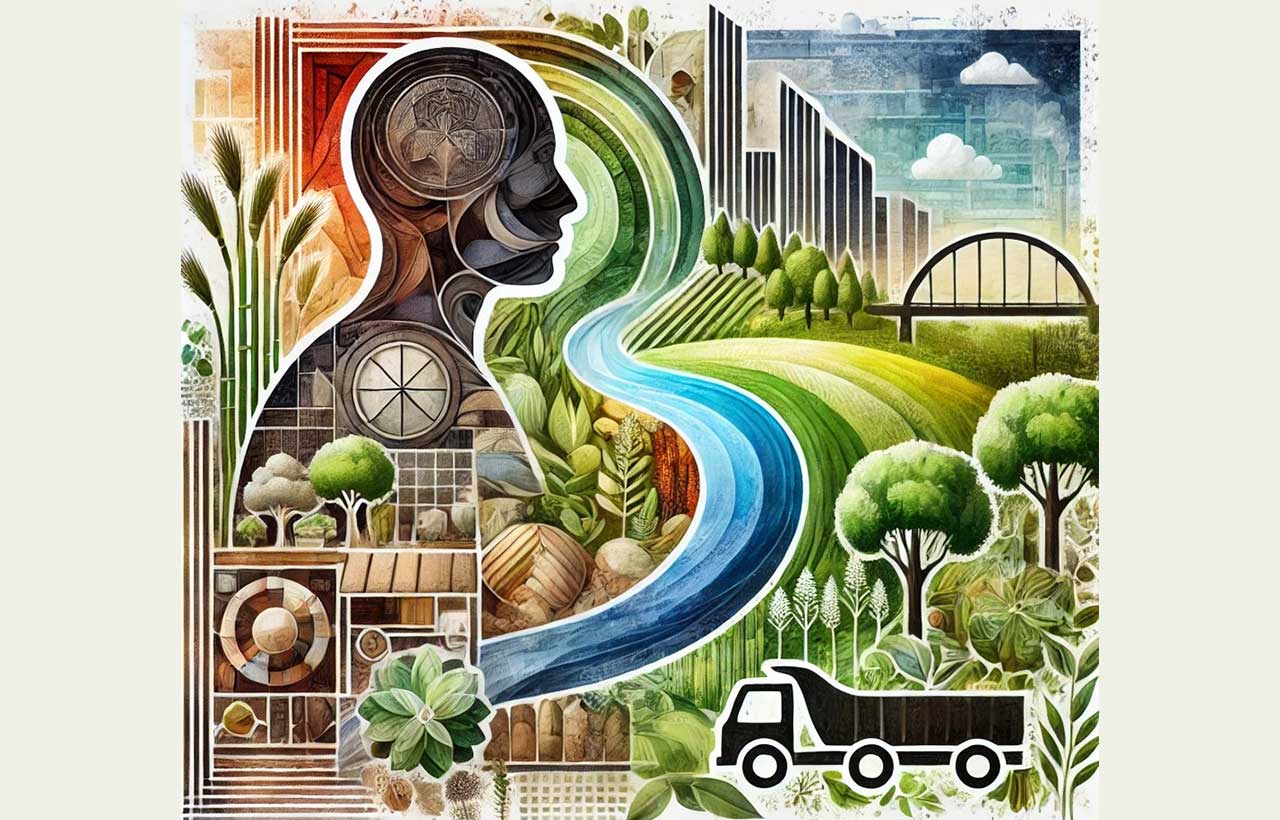 A conscious design implies understanding and experimenting with various techniques resulting in a deeply humanitarian architecture. In recent advancements, there has been a voice within the architectural community to embrace a holistic and deliberate approach to design that transcends the boundaries between man, material, mother nature, and the market. The idea connects occupants with nature and ecologically sensitive spaces with sustainable materials. The mindful and profound intersection conveys a transformative opportunity for designers to rethink their role in shaping the built environment in the kindness of a sustainable, honest, and resilient future.
A conscious design implies understanding and experimenting with various techniques resulting in a deeply humanitarian architecture. In recent advancements, there has been a voice within the architectural community to embrace a holistic and deliberate approach to design that transcends the boundaries between man, material, mother nature, and the market. The idea connects occupants with nature and ecologically sensitive spaces with sustainable materials. The mindful and profound intersection conveys a transformative opportunity for designers to rethink their role in shaping the built environment in the kindness of a sustainable, honest, and resilient future.
Conclusion
Today in this article of BMR, we navigate the challenges of construction, innovation in materials and construction techniques that have become the cornerstone of sustainable architecture. The crux lies in a fascinating blend of tradition and technology—self-healing concrete, recycled plastics, 3D-printed homes, and the revival of natural materials like bamboo and rammed earth. Each innovation isn’t just a solution; it’s a step toward a future where design is smarter, greener, and more human-centric. Let us share ideas and learn together to witness how today’s designers are crafting poetic dialogues between material and form, setting a course for a sustainable and beautiful tomorrow.
Frequently Asked Questions (FAQs)
What is the "Man, Material, Mother Nature, and Market" design philosophy?
The holistic design expresses lifestyle, nature and composition with a sensitivity that caters emotional and physical needs of the users in a specific space incorporating the factors of Man, Material, mother and Market.
Why is material selection important in sustainable design?
Building materials are not only static objects but they define the structure and its characteristics. It is important to consider the choice of material in crafting a sustainable and eco-friendly space.
What is the significance of balancing tradition and technology in design?
Learning from the past, we have evolved and our standard of living has changed, but it is important to balance our cultural roots in shaping tomorrow while understanding the technological advancement and cutting-edge technology that saves our time and helps to build conscious spaces.


